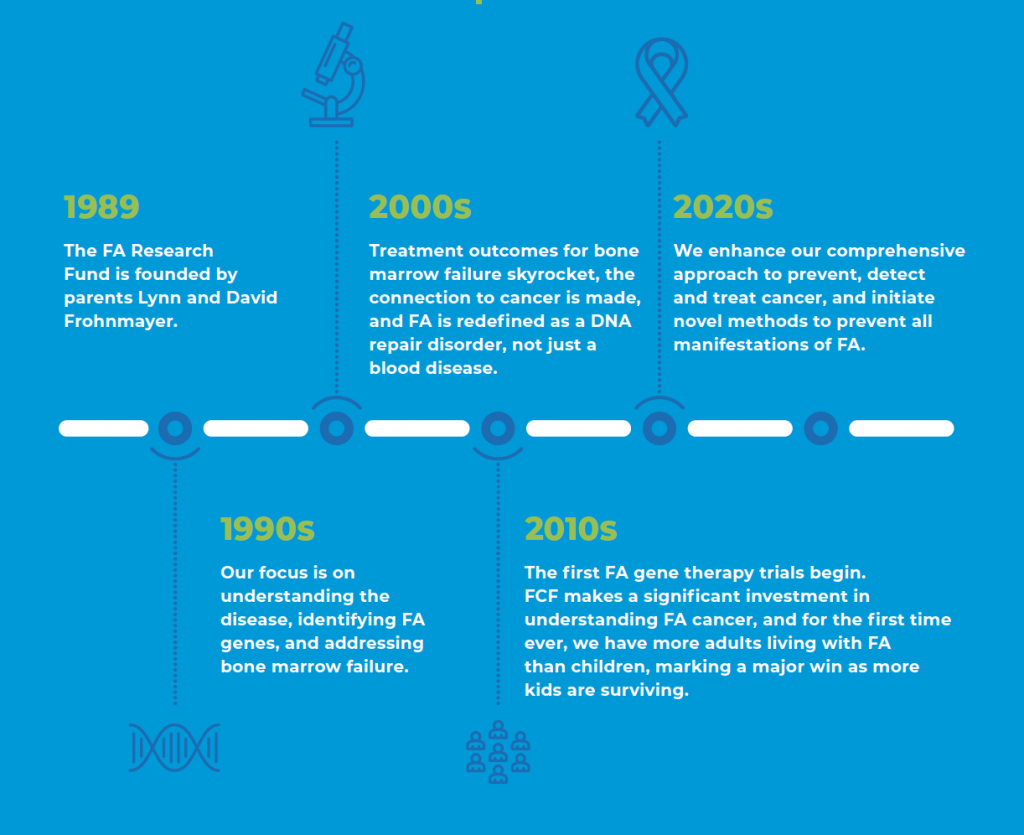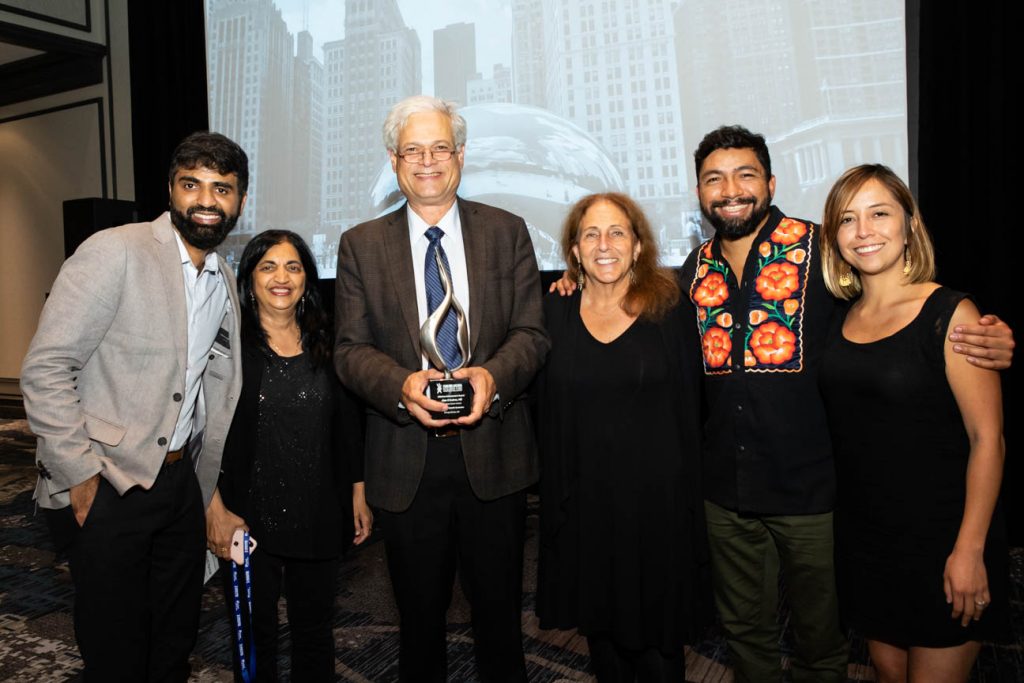Major milestones brought us here
Taking on Fanconi cancer
Founded in 1989, the Fanconi Cancer Foundation celebrates 35 years of funding Fanconi anemia (FA) research, investing $33 million in understanding the disease, pioneering therapies, and getting to the core of the problem: DNA repair.
Now, the Fanconi Cancer Foundation is the leading FA organization in the world, driving research to solve FA and associated cancers, impacting everyone affected by FA.
We focus on early detection, prevention, and novel therapies for FA cancers. We invest in preclinical models, clinical trials, and empowering our community.




